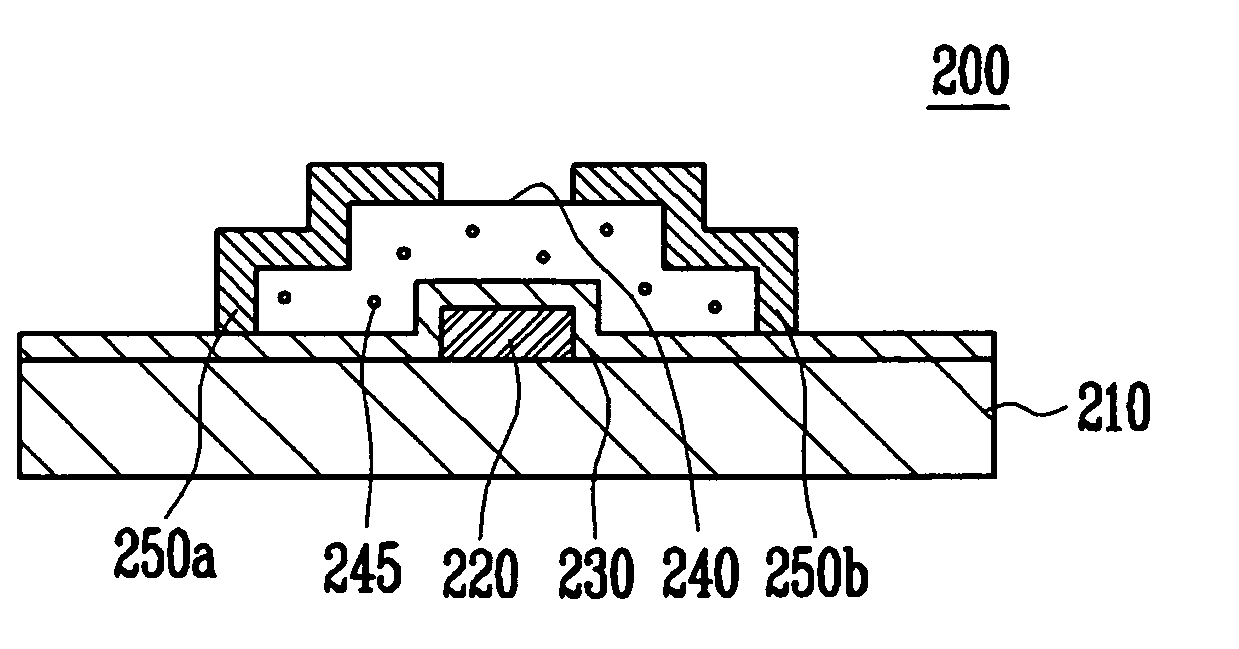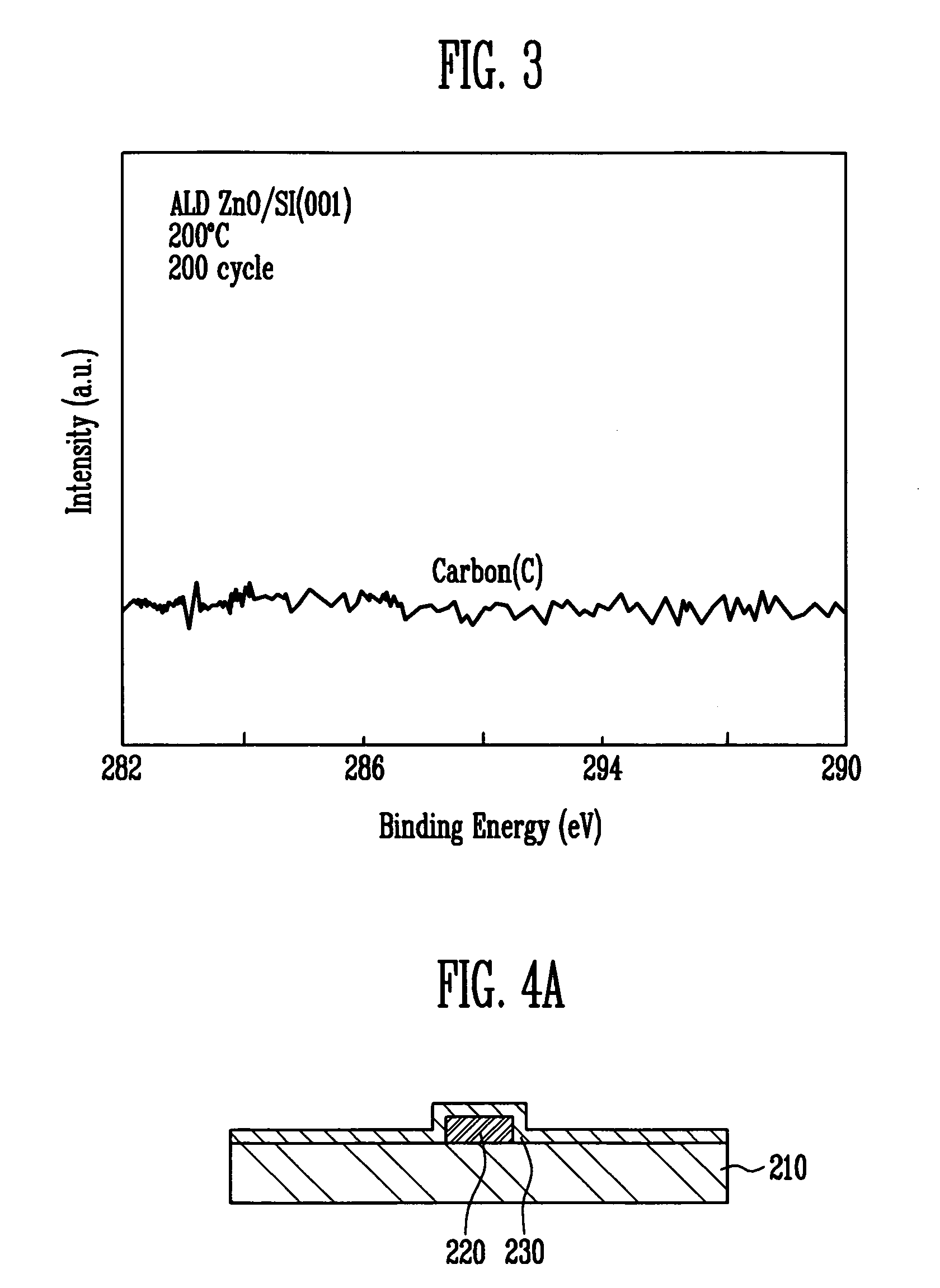Thin film transistor and organic light-emitting display device having the thin film transistor
a thin film transistor and display device technology, applied in the direction of semiconductor devices, basic electric elements, electrical appliances, etc., can solve the problems of deteriorating physical properties of the thin film transistor, the difficulty of using the semiconductor layer as a drive circuit of the display panel demanding a high operation speed, and the deterioration of the contact characteristics between the cathode electrode and the light emission layer
- Summary
- Abstract
- Description
- Claims
- Application Information
AI Technical Summary
Benefits of technology
Problems solved by technology
Method used
Image
Examples
first embodiment
[0026]FIG. 2 is a cross-sectional view showing a thin film transistor constructed as the present invention. Referring to FIG. 2, the thin film transistor 200 of the present invention includes a gate electrode 220 formed on a substrate 210, a gate dielectric layer 230 formed on the substrate 210 covering the gate electrode 220, a semiconductor layer 240 including a channel region, a source region and a drain region and formed on the gate dielectric layer 230, and a source electrode 250a and a drain electrode 250b patterned on the semiconductor layer 240. The source electrode 250a is electrically coupled to the source region of the semiconductor layer 240, and the drain electrode 250b is electrically coupled to the drain region of the semiconductor layer 240. The semiconductor layer 240 is formed of P-type ZnO:N layers through a reaction of a mono-nitrogen gas with a zinc precursor including organic compounds, and the ZnO:N layer includes an impurity element 245 at a content of 3 at %...
second embodiment
[0053]FIG. 6 is a cross-sectional view showing a thin film transistor constructed as the present invention. Referring to FIG. 6, the thin film transistor 400 of to the present invention includes a substrate 410, and a semiconductor layer 420, a gate electrode 440 and source / drain electrodes 470a and 470b formed on the substrate 410. The semiconductor layer 420 is composed of P-type ZnO:N layers 420 through a reaction of a mono-nitrogen gas with a zinc precursor including halide compounds, and the ZnO:N layer 420 includes an halide 425 at a content of 3 at % or less.
[0054]The semiconductor layer 420 is composed of P-type semiconductors. The semiconductor layer 420 is formed of P-type ZnO:N layers by reacting a mono-nitrogen reaction gas with a zinc precursor, namely one organic compound precursor including carbon compounds and selected from the group consisting of DEZ (Diethyl-Zinc), DMZ (Dimethyl-Zinc) and EMZ (Ethyl-Methyl-Zinc), or one inorganic precursor, namely one precursor inc...
PUM
 Login to View More
Login to View More Abstract
Description
Claims
Application Information
 Login to View More
Login to View More - R&D
- Intellectual Property
- Life Sciences
- Materials
- Tech Scout
- Unparalleled Data Quality
- Higher Quality Content
- 60% Fewer Hallucinations
Browse by: Latest US Patents, China's latest patents, Technical Efficacy Thesaurus, Application Domain, Technology Topic, Popular Technical Reports.
© 2025 PatSnap. All rights reserved.Legal|Privacy policy|Modern Slavery Act Transparency Statement|Sitemap|About US| Contact US: help@patsnap.com



